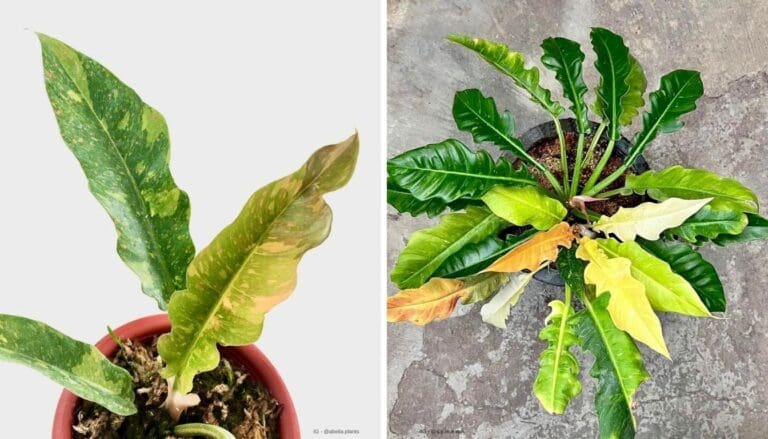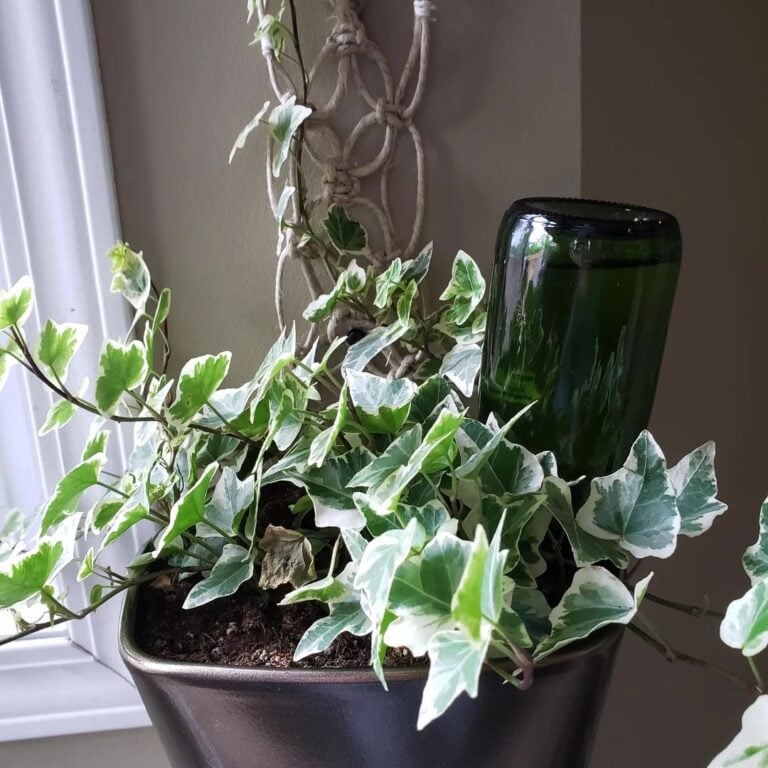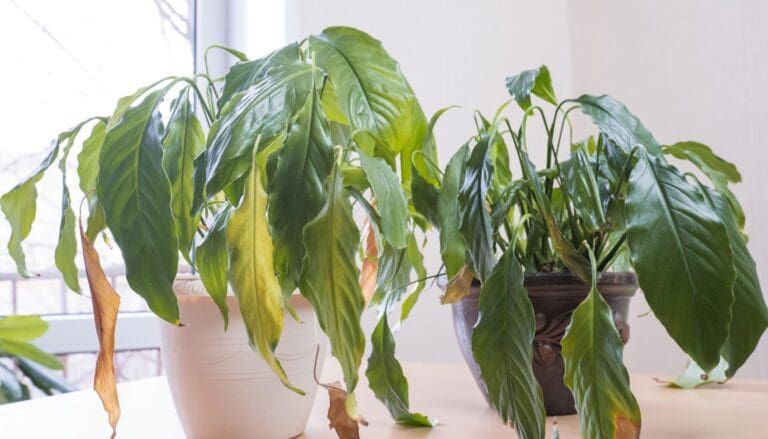7 Quick Wins to Boost Your Plant’s Immunity This Season
This season, I really want my plants to stay healthy and strong. Boosting my plant’s immunity means they’ll have a much better shot at fighting off diseases and just growing better overall.
Honestly, keeping them in good shape doesn’t have to be a big project. I’m always looking for easy ways to help my garden thrive.
Learning a few simple steps can genuinely make a difference in how my plants grow through the year. Sometimes it’s the little tweaks that matter most.
Please note: Simplify Plants is reader-supported. As an Amazon Associate, I earn from qualifying purchases made by our readers with no extra cost added to you all! Some links in the post are affiliate links and I get a commission from purchases made through links in the post.
1) Increase watering early in the morning
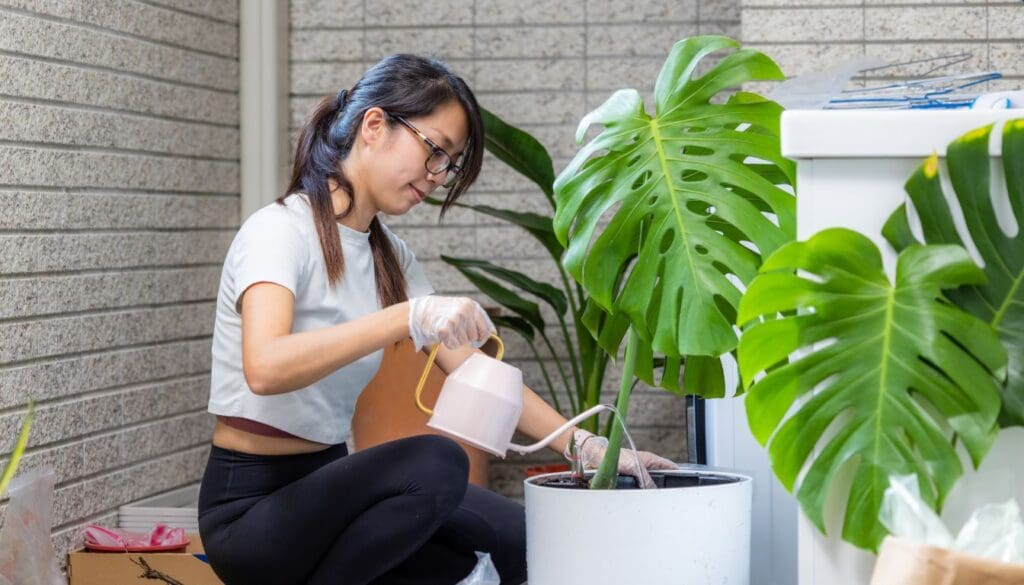
I try to water my plants early in the morning whenever I can. It gives them a good start before the sun really gets going.
Roots get a chance to soak up the water, and the leaves dry out before nightfall. Morning watering helps prevent diseases too—wet leaves in the evening are just asking for trouble like mold or mildew.
I find my watering routine is easier to manage when I stick to mornings. The soil absorbs moisture slowly, and my plants just seem less stressed.
Watering early also reduces water loss. If I wait until later, the sun just steals most of it away through evaporation.
I use a watering can or a gentle stream so I don’t wash away the soil. Watering the base, not the leaves, keeps plants healthier and encourages strong root growth.
When I’m out there early, I can spot any issues—pests, yellow leaves—before my day gets busy. That way, I can actually do something about it.
Getting into this habit is easy, and honestly, healthy watering keeps my plants’ defenses strong all season.
2) Prune damaged leaves promptly
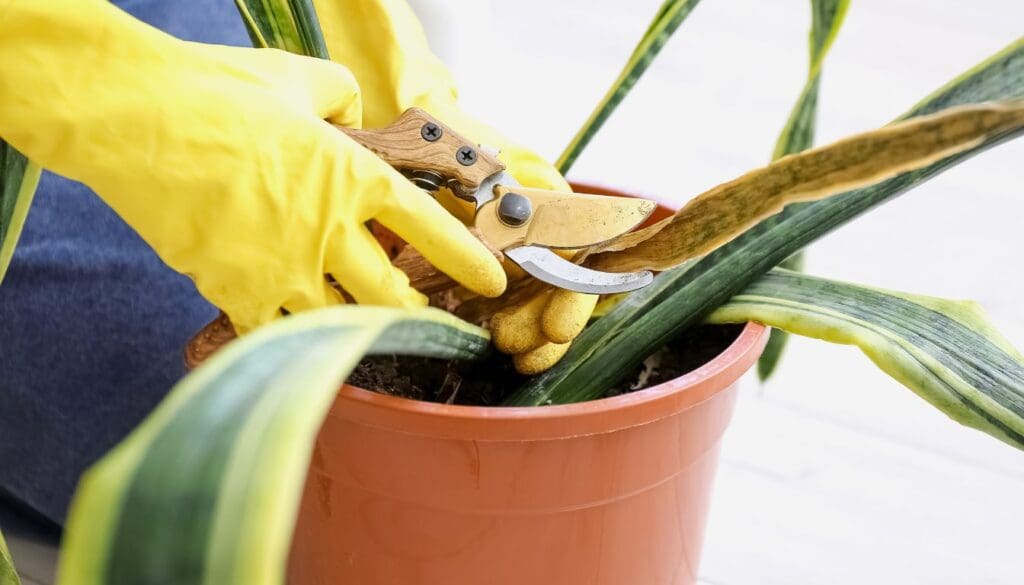
When I see damaged or yellow leaves, I just snip them off as soon as I notice. They’re not just ugly—they can attract pests or diseases that spread fast.
By pruning, I help my plant focus its energy on healthy growth instead of wasting it on leaves that aren’t coming back. I use sharp, clean scissors and try to cut close to the stem without nicking it.
Pruning helps air flow too, which keeps leaves dry and less likely to rot or get moldy. I’ve noticed my plants seem sturdier when I do this regularly.
If I ignore damaged leaves, they can become bug hotels. One sick leaf can quickly turn into a bigger problem.
I always toss the cut leaves into the trash or compost—never just leave them on the soil. No point risking the same issues coming right back.
Pruning doesn’t take long, and it keeps my plants looking sharp. Plus, it really does boost their overall health.
3) Apply neem oil spray weekly

I use neem oil spray to help protect my plants from pests and diseases. Neem oil comes from the neem tree and has been a go-to for gardeners for ages.
I mix it up with water, following the directions, and spray the leaves—top and bottom—once a week, usually in the evening when it’s cooler.
Neem oil helps stop bugs like aphids and spider mites, and it can help prevent some fungal issues. It’s not magic, but regular use really keeps problems away.
When I stick to this weekly, my plants just look better. I always avoid spraying in strong sun, since that can burn the leaves, and I test a small patch first—just in case.
Neem oil is safe for most plants, but I always double-check the label. If I’m growing herbs or veggies, I rinse them before eating, just to be sure.
A neem oil routine is a simple way to support plant health all season. It only takes a few minutes, but the payoff is worth it.
4) Mix compost tea into soil

I love using compost tea to keep my plants healthy. Compost tea is just compost soaked in water, so all those helpful nutrients and microbes get into the mix.
I pour it around the base of my plants—not on the leaves—for a gentle nutrient boost. It’s not too strong, which I like.
Good microbes in compost tea help fight off harmful bacteria in the soil. Stronger roots and fewer diseases—what’s not to like?
I use compost tea early in the morning or late in the day so the sun doesn’t dry it out too fast. My plants seem to soak it up better that way.
If the tea smells bad, I skip it. It should smell earthy, not rotten. I don’t want to risk making things worse.
I go easy on the amount—just enough to moisten the soil. No need to drown my plants.
Compost tea is super easy to make at home. Just compost, water, and a bucket—let it steep for a day or two, strain, and you’re set.
Mixing compost tea into soil has helped my garden look greener and healthier. My plants bounce back from stress faster, and I’ve had fewer disease problems.
For me, compost tea is just a quick, easy way to give my plants a little extra help. I notice the difference every time.
5) Use Epsom salt for magnesium boost

I like to use Epsom salt to give my plants a magnesium boost. Magnesium is key for healthy growth, and without it, plants can look pale and weak.
If I see leaves turning yellow between the veins, that’s usually a magnesium issue. Epsom salt is a cheap, simple fix that works for flowers, veggies, and even some houseplants.
I mix about one tablespoon per gallon of water and pour it onto the soil, or sometimes I spray the leaves. It helps the plant absorb magnesium pretty quickly.
Epsom salt isn’t a fertilizer, but it supports growth and immunity. Healthier plants are just better at fending off pests and diseases.
I don’t overdo it, though—too much can mess up the balance. I usually treat my plants every few weeks, but only if they actually look like they need it.
Epsom salt is safe for most plants if you use it right, but I always check what my specific plant prefers.
Always water well after using Epsom salt so it dissolves and reaches the roots.
It’s kind of amazing how such a small thing can make leaves look greener. I keep Epsom salt in my garden kit because it’s so easy to use.
My plants seem tougher and less stressed when I use it. Magnesium from Epsom salt gives them that extra boost they sometimes need.
6) Set up a wind barrier
I’ve found that strong winds can stress out my plants. High winds break stems, dry out leaves, and knock over young sprouts.
A simple way to protect your plants is by setting up a wind barrier. I use fences, trellises, or even taller plants as a shield. Sometimes I throw up burlap or plastic sheets if I’m in a hurry.
A wind barrier doesn’t have to be fancy or expensive. I’ve used old sheets, garden netting, even wood pallets. The trick is making it tall enough to block most of the wind but not so tight that air can’t move at all.
When I put a barrier on the windy side, my plants get instant relief. Leaves stay in one piece, and the soil doesn’t dry out as fast. I don’t have to water as much, which is a bonus.
I like to plant in clusters, too. Grouping plants helps them support each other and acts like a mini windbreak. It’s great for small or young plants.
Building a wind barrier is one of the easiest ways I boost my plants’ immunity each season. It helps my garden bounce back after storms and keeps everything looking good.
If you haven’t tried it, give it a shot—even a quick fix can help a lot.
7) Add a layer of mulch
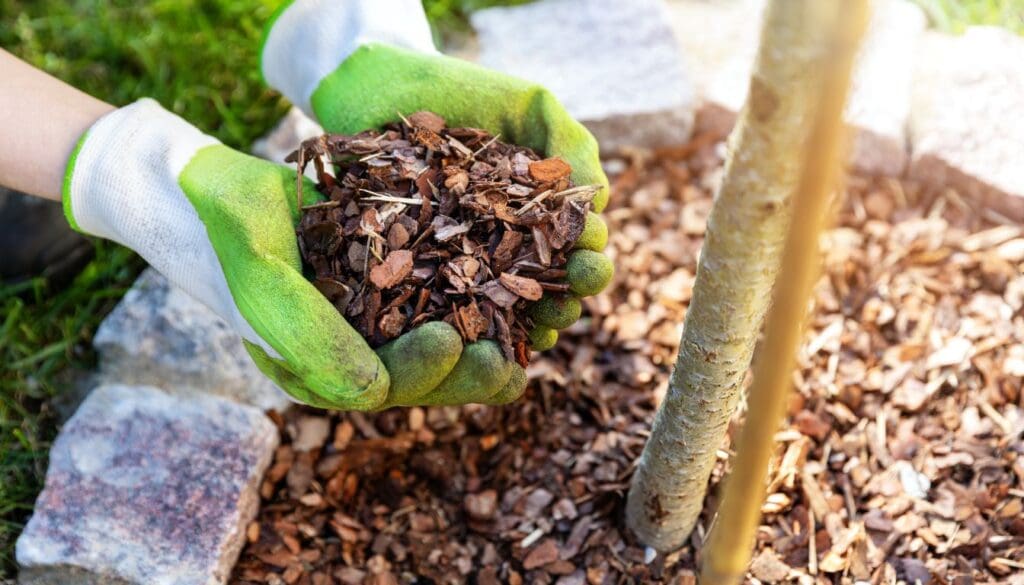
Adding mulch is one of my favorite tricks for stronger plants. Mulch is just a loose layer I spread on the soil around my plants—wood chips, straw, leaves, even grass clippings work.
I use mulch because it protects the soil from drying out too fast. When I water, the mulch helps the soil hold onto moisture longer.
Mulch also keeps weeds down, so my plants aren’t fighting for water and nutrients. That just makes life easier for them.
When I put mulch down, I keep it a bit away from the stems to stop rot and let air reach the base. Two or three inches thick is usually enough.
Another thing I like about mulch is how it keeps the soil temperature steady. It helps roots stay warmer when it’s chilly and cooler when it’s hot. That’s huge during wild weather swings.
Natural mulch breaks down over time and adds nutrients to the soil, so it’s kind of a win-win.
After heavy rain or wind, I check the mulch and spread it back out if needed. Keeping a good layer is an easy way to give my plants a health boost.
How Immunity Works in Plants
Plants have special defenses to fight off diseases and harmful pests. I’ve found that understanding these defenses helps me figure out how to protect my plants from whatever comes their way.
Natural Defense Mechanisms
Plants have their own natural defense systems that keep them safe. When a pest or germ lands on them, they might release chemicals that work a bit like alarms.
These alarms tell the rest of the plant to get ready for trouble. Some plants even make bitter-tasting chemicals to keep bugs away.
Others just toughen up their leaves, making it harder for pests to snack on them. I’ve also noticed some plants will close their tiny leaf holes—those are called stomata—so germs can’t sneak in.
Here’s a quick table with a few defenses:
| Defense Type | How It Protects |
|---|---|
| Thick leaf surface | Stops diseases from getting in |
| Toxins/chemicals | Kills or scares away pests and bugs |
| Closing stomata | Stops germs from entering |
These defenses are always there, but they really kick into gear when a plant feels under attack.
Common Threats Plants Face
Some of the main things that threaten my plants are insects, fungi, and viruses. Insects like aphids or caterpillars chew on leaves and can spread disease.
Fungi cause weird spots, fuzzy growth, or even rot on plant parts. Viruses might twist leaves, turn them yellow, or just slow down growth.
Weather doesn’t always help, either. Too much rain? Mold shows up. If it’s too dry, plants get stressed and are easier targets.
Here’s a rundown of common threats:
- Insects (aphids, caterpillars)
- Fungal diseases (mildew, mold)
- Viruses (leaf curl, yellowing)
- Harsh weather (rain, drought)
Catching these threats early really helps keep plants stronger and healthier.
Supporting Your Plant’s Health All Season

Keeping my plants healthy means I’m always paying attention and trying to use gentle, earth-friendly methods. If I act early and make smart choices, my garden can thrive—no harsh chemicals needed.
Monitoring for Early Warning Signs
I watch for signs that a plant might be struggling. Things like yellowing leaves, spots, drooping, or stunted growth catch my eye.
If something looks off, I check for pests like aphids or spider mites hiding under the leaves. I also make a habit of inspecting my plants every few days.
I look closely at the soil and stems, hoping to spot fungus or rot before it spreads. Early action makes a big difference.
Here’s a simple checklist I keep handy:
- Check leaf color
- Inspect stems for damage
- Look under leaves for pests
- Feel soil for moisture
Taking a few notes helps me track changes and jump in quickly if something’s wrong.
Eco-Friendly Strategies for Home Gardeners
I stick to natural solutions for my garden. Compost and mulch are my favorites—they feed the soil, help it hold moisture, and keep weeds down.
For pests, I reach for neem oil or insecticidal soap since they’re safer for pets and pollinators. When I water, I aim for the base of the plant, not the leaves, to avoid encouraging fungal diseases.
Planting flowers like marigolds or nasturtiums brings in good bugs that eat the bad ones. I also try to rotate where I plant veggies each year to keep the soil healthy.
That way, my garden feels a bit stronger every season.
Frequently Asked Questions
I like to keep things simple—regular morning watering, quick pruning, and natural sprays help my plants stay strong.
Natural oils and scents? They really seem to make a difference in how healthy my plants look and feel.
What are some natural ways to enhance plant immunity this season?
I use neem oil spray once a week to protect my plants from pests and diseases. If I spot damaged leaves, I prune them right away.
Compost tea and a sprinkle of Epsom salt in the soil give my plants an extra boost.
How can using phytoncides improve the health of my plants?
Phytoncides are natural compounds plants release. When I keep plants that give off these compounds nearby, it seems to lower stress for me and can help keep harmful germs away from my plants.
Which house plants emit the most beneficial phytoncides?
I’ve noticed pine, cedar, and cypress trees put out a lot of phytoncides. Lavender and rosemary are great for their scents too.
These kinds of plants just make the air feel fresher at home.
Can essential oils be used to stimulate plant immunity, and if so, how?
I use diluted essential oils like tea tree or eucalyptus in a spray bottle. I just mist the air around my plants—not right on them—to help support their defenses against pests and molds.
What are the advantages of having plants with a strong phytoncide scent at home?
Plants with strong phytoncide scents can help freshen the air and might protect both me and my plants from germs.
Honestly, the scent just makes my home feel calmer and more inviting.
Are there specific benefits to using a phytoncide mattress for my plants?
Putting a phytoncide-infused mattress or mat under your pots might actually help cut down on mold. It could keep things tidier around your plants, which is especially nice if they’re indoors most of the time.
Recommended Garden Supplies
| Product Image | Our Recommended Gardening Supplies | Check Offers! |
|---|---|---|
Top Top
Top
Top
Top
Top
Top
Top
Top | rePotme Houseplant and Tropical Classic Potting Soil Mix | Check Offer On Amazon |
 Top
Top
Top
Top
Top
Top
Top
Top | Espoma Organic Indoor Plant Food | Check Offer On Amazon |
 Top
Top
Top
Top
Top
Top
Top
Top | GooingTop LED Grow Light 6000K Full Spectrum Clip Plant Growing Lamp | Check Offer On Amazon |
 Top
Top
Top
Top
Top
Top
Top
Top | Soil Moisture Meter | Check Offer On Amazon |
 Top
Top
Top
Top
Top
Top
Top
Top | Govee Hygrometer Thermometer, Bluetooth Enabled! | Check Offer On Amazon |
 Top
Top | LEVOIT Humidifiers for Large Room(Best For Plants) | Check Offer On Amazon |
 Top
Top
Top
Top
Top
Top
Top
Top | Upgraded DIY Automatic Drip Irrigation Kit, 15 Potted Houseplants Support | Check Offer On Amazon |
 Top
Top
Top
Top
Top
Top
Top
Top | Stainless Steel Heavy Duty Gardening Tool Set | Check Offer On Amazon |
 Top
Top
Top
Top
Top
Top
Top
Top | Bonide Insecticidal Soap | Check Offer On Amazon |
 Top
Top
Top
Top
Top
Top
Top
Top | Bonide 32 oz Spray Neem Oil for Organic Gardening | Check Offer On Amazon |
 Top
Top
Top
Top
Top
Top
Top
Top | Garden Safe Fungicide | Check Offer On Amazon |

